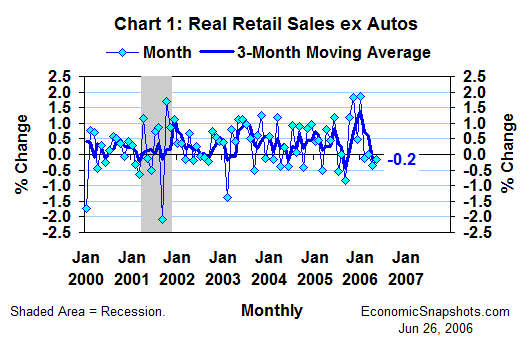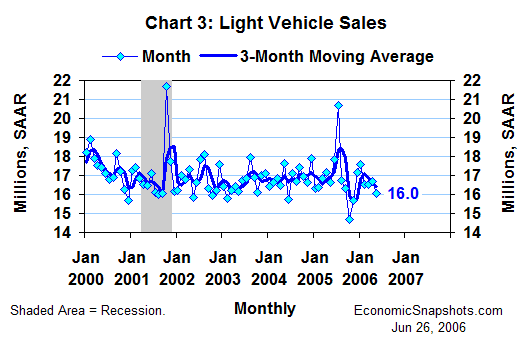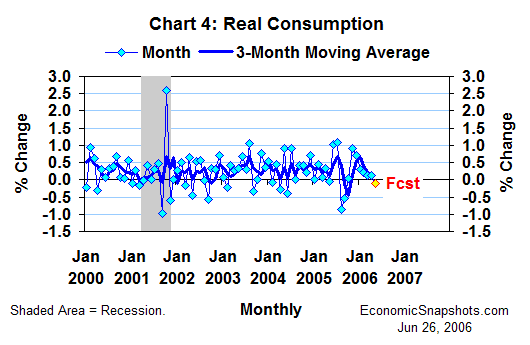
| Back to Index |
June 26, 2006 – U.S. retail sales excluding autos rose by 0.5% in May, but the CPI for consumer goods rose by 0.7%. Thus, real non-auto retail sales edged down by 0.2% in May after a 0.3% April decline (Chart 1).

For the three months through May, real non-auto retail sales edged down by an average 0.2% per month, matching their average for the three months through April (Chart 2). With higher inflation eating up consumers’ purchasing power, these sales have languished for four straight months.

Compounding this weakness in non-auto consumer goods, car and light truck sales fell by 0.7M units to a 16M unit annual rate in May (a 3.9% decline) after being roughly flat for the prior two months (Chart 3).

Assuming growth of about 0.3% in consumers’ May real services purchases (in line with recent trends), these data suggest that real consumption might have edged down by 0.1% in May after edging up by 0.1% in both of the prior two months (Chart 4). (The May consumption data will be released on Friday.)

That would leave Q2 consumption tracking at an exceptionally weak 1% annual rate, as of the second month of the quarter (Chart 5). Consumption rose by a far sturdier 5.2% in Q1, but Q4 growth was only 0.9%.

Consumers account for 70% of U.S. GDP. If this weakness in Q2 consumption were to persist in Q3, the economy would probably fall into a recession.
At this point however, a 1% increase in Q2 consumption would yield average growth of just over a 3% annual rate for Q1 and Q2, and slightly below 3% for the four quarters through Q2. That seems to be roughly consistent with the FOMC’s forecast of a consumer-led slowing to a “sustainable” (3% to 3.5%) trend in real GDP growth this year. (Real GDP rose at a 5.3% annual rate in Q1, propelled primarily by the strength in consumption.)
Fed Chairman Bernanke also warned in his April testimony to the Congressional Joint Economic Committee that we might see some exaggerated signs of weakness in the Q2 data “as the economy downshifts from the first-quarter spurt”.
Bottom line: As long as real consumption growth seems to be homing in on a “sustainable” rate of about 3% to 3.5% on average, the FOMC majority probably won’t be moved by an exceptionally weak Q2.
Suzanne Rizzo